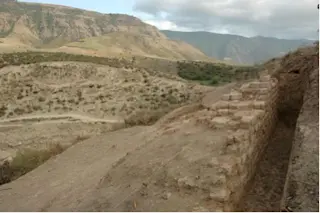Golestan Province in Northern Iran is a unique landscape. Sandwiched between the temperate forests of the Alborz Mountains and the Caspian Sea, a narrow corridor connects Persia with the desert steppes of Central Asia. The passage measures 120 miles across from sea to mountain, and it’s made of fertile rolling plains rising to windswept hills. The ancient name for this place was Gorgan (گرگان), meaning “land of wolves”, and wild wolves can still be found here, along with roe deer and bounding goitered gazelles.
For centuries, Golestan lay at the northern border of one of the world’s first superpowers: the Sassanian Empire. For 400 years, from their ascension in the 3rd century until they fell to Muslim conquerors around the year 600, the Sassanians ruled a vast stretch of the ancient Near East from their capital in Ctesiphon, just south of Baghdad. While the Western Roman Empire struggled in Europe, ...














